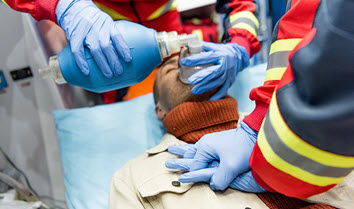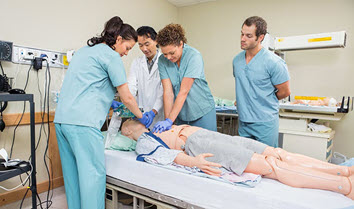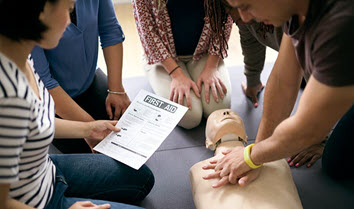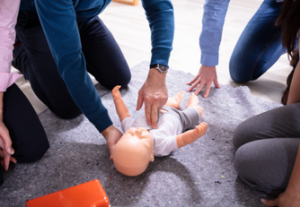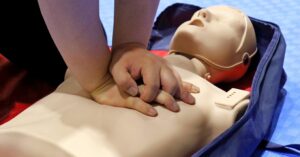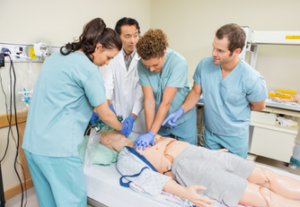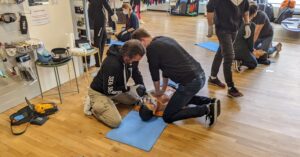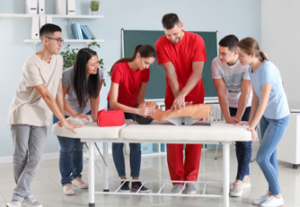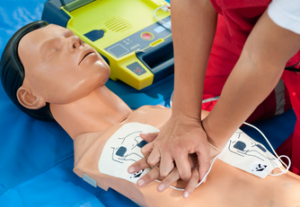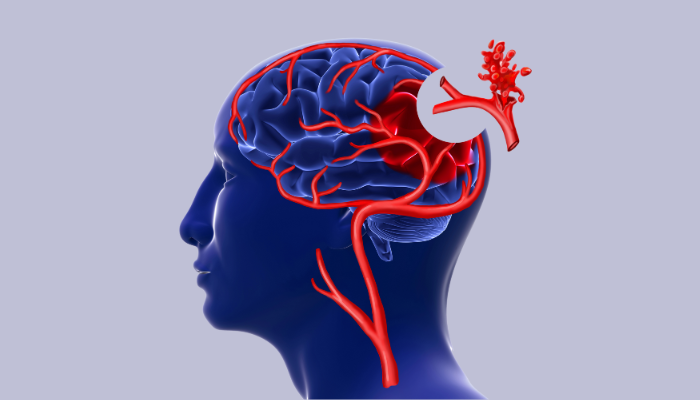
EMR Safety and Health offers a comprehensive range of American Heart Association certification programs designed to meet all levels of training needs. Whether you’re seeking initial certification, renewal, or courses to become an instructor, we’ve got you covered. We provide both in-person and online American Heart Association classes, including BLS (Basic Life Support), ACLS (Advanced Cardiac Life Support), Heartsaver (Basic CPR, AED, and First Aid), and PALS (Pediatric Advanced Life Support). Additionally, we offer supplemental courses focused on specific subject areas to enhance your skills. |
Our American Heart Association Training Courses
Why Choose EMR Safety and Health for Your American Heart Association Certification?
At EMR Safety and Health, we go above and beyond to support our students with innovative programs and training solutions. Our approach includes delivering valuable course materials, offering consultative services, and providing corrective action plans tailored to individual needs. With a network of nearly 2000 instructors across North America, we bring the credentials and expertise to meet your AHA certification requirements.
Honor and trust are at the core of everything we do. We uphold the principles of integrity and truthfulness through our actions, ensuring exceptional training led by experienced professionals.
Our courses feature up-to-date, original materials and the latest information, ensuring you receive the highest quality training. We continuously update our curriculum to meet the evolving demands of the marketplace, making us your trusted partner for American Heart Association classes and beyond.
AHA Training FAQs
What are the benefits of becoming certified in Cardiopulmonary Resuscitation (CPR?)
- CPR saves lives. The AHA says that “CPR, especially if administered immediately after cardiac arrest, can double or triple a person’s chance of survival.”
- Being certified gives you the confidence to act in an emergency situation.
- CPR keeps oxygenated blood moving throughout the body which helps to prevent brain damage and death.
- In a CPR class you will learn how to use an Automatic External Defibrillator (AED) properly. This life-saving skill can help you to provide care to someone who suffers a sudden cardiac arrest. One study estimates that “about 1,700 lives are saved in the United States per year by bystanders using an AED.
- Learning CPR can prepare you to help if someone is choking on food or another foreign object.
- CPR class can show you how to help victims in the event of a drowning.
- CPR training provides the skills you need to help in all kinds of emergency situations.
What skills are taught in the Heartsaver Basic CPR course?
The Heartsaver First Aid/CPR/AED course, offered by the AHA, trains participants to provide first aid, perform CPR, and use an AED effectively.
Here’s what it covers:
- Essential first aid basic techniques
- How to respond to common medical emergencies.
- How to handle injuries.
- Preparation for environmental incidents.
- CPR execution and AED operation.
- You can also choose to learn Child CPR AED and Infant CPR.
What AHA course should I take?
The Heartsaver First Aid AED Course is for anyone with little or no medical training who needs a certification card for work, regulatory requirements (e.g., OSHA), or personal preparedness. There are no prerequisites for this course.
The Basic Life Support (BLS) Course is for healthcare professionals working in a hospital or healthcare setting. Health Care providers, dentists, dental assistants, doctors, physicians, medical/physician’s assistants, nurses, pharmacists, paramedics, emergency medical technicians, physical/occupational therapists, residents or fellows, medical/nursing students, law enforcement, fire fighters, members of emergency response teams (MERT), lifeguards, athletic trainers, and other professional rescuers. There are no prerequisites for this course other than being a healthcare professional.
The Advanced Cardiac Life Support (ACLS) Course is designed for healthcare professionals who either direct or participate in the management of cardiopulmonary arrest or other cardiovascular emergencies. It emphasizes continuous, high-quality CPR and covers topics such as airway management, recognition and early management of respiratory and cardiac arrest, related pharmacology, and effective communication within a resuscitation team. Before you can take an ACLS course, you must have a current AHA BLS for Healthcare Providers certification card.
The Pediatric Life Support (PALS) Course is for healthcare providers who respond to emergencies in infants and children. This includes personnel in emergency response, emergency medicine, intensive care, and critical care units. Many professions such as, nurse, paramedic, respiratory therapist, pharmacist, are required to have a PALS course completion card. Before taking PALS, healthcare professionals should have a mastery of infant and child BLS skills.
What are the benefits of becoming an AHA instructor?
If you are passionate about helping others, are looking to add to your monthly income or want to make a career change, then becoming an AHA instructor is something you should consider.
There are many benefits of becoming an AHA instructor. As well as being able to potentially save lives as an individual, instructors can help to build a larger network of trained lifesavers.
Here are some of the other benefits:
Earning Extra Income and Establishing Your Own Training Business: If you are looking for ways to supplement your income and would like to have your own training business, then consider becoming and AHA instructor, it’s a good way to make money while filling a legitimate need in your community. Teaching AHA courses can earn you hundreds of dollars per month. In addition, full-time salaried AHA instructor jobs are offered by hospitals, universities, and community centers.
Making a Positive Difference: Instructors provide the skills and training necessary for others to help in an emergency situation. Trainees gain the power to save lives within their workplaces, communities, and families.
Increasing Transferable Skills: Becoming an AHA instructor enables people to build public speaking, presentation, communication, and leadership skills, all of which are valuable in the workplace. Being an instructor can enhance a resume and provide a competitive edge in the job market.
Developing More Self-Confidence: Instructors must constantly work with new groups of people, made up of individuals of varying ages and from all walks of life. Instructors become more comfortable as they teach more classes, and self-confidence can flourish. Instructors can help trainees to develop the self-confidence to act swiftly and competently in an emergency.
Fulfilling a Passion: People who are passionate about saving lives and making positive contributions to the community can gain plenty of personal satisfaction through being an AHA instructor.
What are the steps to become an AHA instructor?
Have a current provider card in the discipline you wish to teach.
- BLS – Basic Life Support
- ACLS – Advanced Cardiac Life Support
- PALS – Pediatric Advanced Life Support
- Heartsaver – Basic CRP, AED, and First Aid
Complete the American Heart Association’s Essential Instructor Course
- BLS Instructor Essentials
- ACLS Instructor Essentials
- PALS Instructor Essentials
- Heartsaver Instructor Essentials
Successfully complete an instructor course in the discipline you wish to teach.
- BLS Instructor Course
- ACLS Instructor Course
- PALS Instructor Course
- Heartsaver Instructor Course
Be monitored by an EMR Training Center Faculty (TCF) member while teaching your first class. This will usually be scheduled on the same day that you complete your instructor course.




